
Parts of a Commercial Grill
Grills are a fundamental appliance found in a wide range of commercial foodservice settings. Knowing what makes up your grill and how it works is crucial for achieving optimal performance and getting the best cooking results. While they may vary in style and function, most commercial outdoor grills share the same core parts. We'll outline the major components of a grill and what they do below so that you can better understand your kitchen and provide your guests with high-quality grilled foods.
Shop All Outdoor Grill Parts and Accessories

The burner is a fundamental grill component that serves as the primary heat source. It is connected to the gas supply and releases heat through small holes on its top side. The quality and material of the burner are essential factors to consider when selecting a grill for your commercial kitchen. We'll outline the most popular types of grill burners below:
- Cast iron burners: Cast iron burners are the traditional type of burner. They are robust and sturdy but may be susceptible to rust over time if not properly maintained.
- Stainless steel burners: Stainless steel burners provide superior performance and high resistance to rust, making them a popular choice for many commercial kitchens.
- Ceramic burners: For those seeking enhanced efficiency in heat distribution, ceramic burners are an excellent option. These burners are adept at radiating high temperatures evenly, resulting in more consistent cooking results.
- Infrared burners: Infrared burners represent a top-tier option for upscale restaurants. They reach extremely high heat levels, allowing precise control over cooking temperatures and delivering exceptional searing capabilities.

Grill grates are the main surface on which food cooks. They apply direct heat to meats, vegetables, and other foods, ensuring even cooking, delicious flavor, and creating sear marks. Since grill grates are exposed to high temperatures and food particles, they are prone to wear and tear, requiring regular cleaning, maintenance, and seasoning to prolong their lifespan and performance. The most common types of grill grates include the following:
- Stainless steel grill grates: These grates are known for their quick heat-up time, ease of movement, and affordability. It's important to note that stainless steel grill grates have low heat retention and may cause food to stick.
- Cast iron grill grates: Cast iron grill grates feature superior heat retention and are great at producing sear marks. They are heavier than other grates and require regular maintenance to prevent rust and ensure longevity.
- Enamel-coated grill grates: Enamel-coated grill grates provide a natural non-stick surface and retain heat well. Handle them carefully, as they are prone to chipping and damage.
- Chrome-plated grill grates: Chrome-plated steel grill grates create a non-stick surface that is easy to clean but is not as durable as other grill grates.

Barriers and radiants refer to the same grill component located above the burners and beneath the grates. They protect the burners from grease and food drippings and promote even heat distribution, reducing the risk of flare-ups and hot spots while ensuring a more consistent cooking experience. Often referred to as heat plates or burner shields, these parts come in three main varieties: metal, ceramic, and lava rock.
- Metal radiants: Metal radiants are the most commonly used type and are available in a variety of shapes and sizes. They are designed to heat up quickly and are typically angled to redirect grease but generate less smoke and flavor than other types.
- Ceramic radiants: Ceramic radiants are known for their superior heat distribution capabilities, ensuring that heat is evenly spread across the grill surface. While they offer excellent heat retention, they leave the burners more vulnerable to grease buildup.
- Lava rock radiants: Lava rock radiants retain heat effectively and have a longer lifespan. However, they may take longer to heat up initially, and there is a risk of grease leaking through the porous lava rock material.
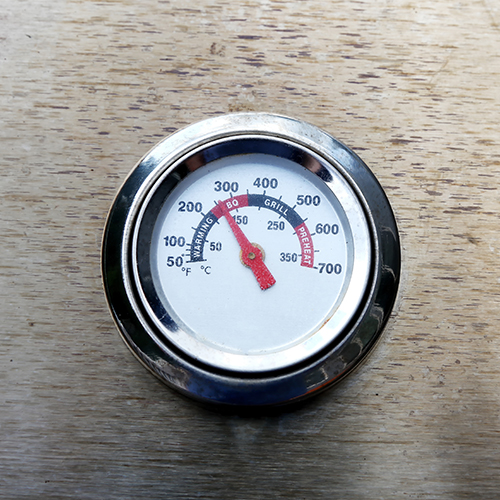
The temperature gauge measures and displays the internal temperature of your grill's cooking chamber. Using this gauge, you can regulate how much heat your grill gives off and ensure your food cooks within the correct temperature range, resulting in perfectly prepared dishes for your customers. Whether you're grilling steaks, burgers, or vegetables, accurately monitoring the temperature inside the grill helps you achieve optimal results every time. There are two main types of temperature gauges:
- Dial temperature gauge: Dial temperature gauges show temperature readings in an analog format and provide a less detailed measurement.
- Digital temperature gauge: These gauges provide precise temperature readings in a digital format.
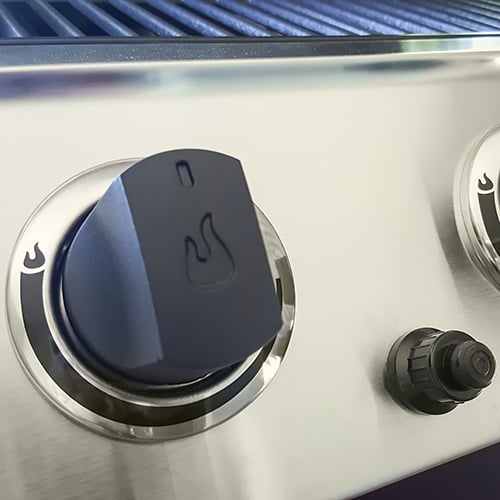
Attached to the gas valve stem, control knobs allow you to adjust the temperature and flame height of your grill, giving you the flexibility to achieve the perfect cooking conditions for your menu items. They do this by giving you control over the gas flow to burners. In the event of a fire outbreak, these knobs enable you to quickly shut off the burner, helping to prevent further escalation of the situation. This functionality is essential for ensuring the safety of your staff and customers in a busy commercial kitchen environment.
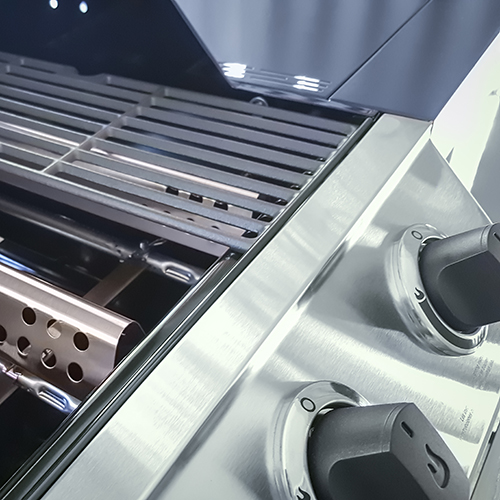
Also known as the igniter, ignition systems provide the spark to light your grill's flame. When you turn on the grill, the spark is generated and sent through a wire to an electrode, which then ignites the gas, lighting the burner. Regular maintenance and prompt replacement of faulty igniters can help prevent downtime and ensure your grill is always ready for use. There are two main types of ignition systems for a commercial grill:
- Piezo ignition system: The most prevalent type is the piezo, or piezoelectric, ignition system. This system utilizes a material with a natural electric charge, such as a crystal, to generate a spark. It is known for its reliability and ease of use.
- Battery-powered ignition system: This system relies on a battery to create an electric spark. While not as common as the piezo ignition system, the battery-powered ignition system offers convenience and portability, making it a suitable option for certain grill setups.

The warming rack is positioned above the grill grates and is a convenient area to keep finished foods warm while you continue grilling other items. They are useful when certain foods are ready before others or to prevent overcooking while keeping them at an ideal serving temperature. Warming racks also double as a secondary cooking space for foods that do not require direct heat. In the event of flare-ups or grill fires, they provide an evacuation zone to prevent foods from burning. Warming racks can be made from several different materials:
- Stainless steel: Stainless steel warming racks are the most popular option and are easy to clean and maintain.
- Cast iron: Cast iron warming racks are a more affordable option, but require regular seasoning to prevent rusting and corrosion.
- Porcelain-coated steel: Porcelain-coated steel offers a balance between durability and ease of maintenance. The porcelain coating protects the rack from rust and provides a smooth, easy-to-clean surface.

Grease trays and drip pans collect grease, drippings, and food particles that fall through the grates. It is important to empty and clean them regularly. Failure to do so can cause a buildup of grease and food debris, and if enough accumulates, it will become a fire hazard. They are easy to remove and replace, allowing easy maintenance and replacement. Although the terms grease tray and drip pan are used interchangeably, there is a slight difference between the two:
- Grease trays: Grease trays are smaller, have shorter walls, and must be cleaned frequently.
- Drip pans: Drip pans are larger and have higher walls, allowing them to hold more waste at a time.
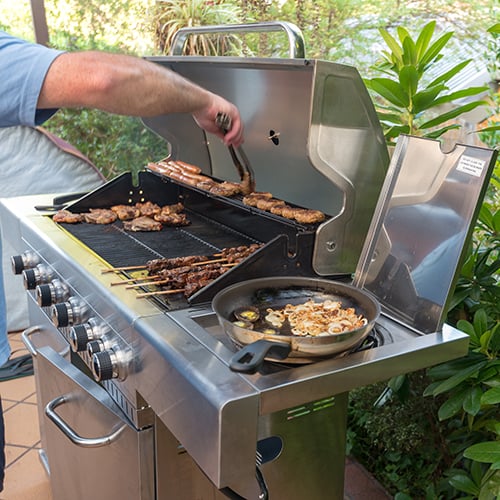
Side burners are separate cooking surfaces that provide the flexibility to cook more food at the same time, increasing efficiency during busy service hours. While some side burners are integrated into the grill, they can also be standalone units. The main advantage of side burners is their ability to cook foods at different temperatures or settings than the main grill. This feature is useful when preparing side dishes, sauces, or other ingredients that complement the main course. Just as grills do, side burners come in several styles to fit your needs:
- Single side burners: Single side burners provide a small cooking surface to prepare side dishes or keep foods warm while you focus on grilling your main course.
- Double side burners: Double side burners offer a similar function to single side burners but provide more cooking area and greater control over the surface temperature.
- Infrared searing stations: Infrared searing stations are perfect for achieving restaurant-quality sear marks and flavor. These burners can reach higher temperatures quickly, creating a perfect sear on your meats for that professional touch.
- Power burners: These burners provide fast grilling results, allowing you to cook your food quickly without compromising flavor or texture.
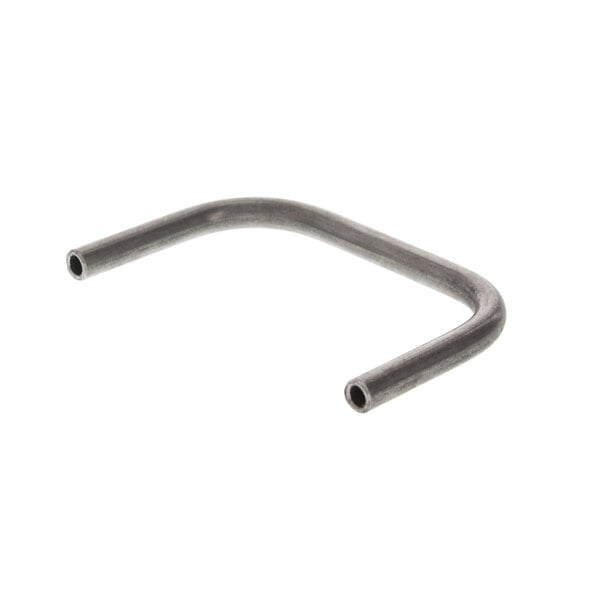
Also referred to as crossover tubes, these components connect between the gas grill burners, providing a channel to distribute the gas and flame. This gives you control over how your grill heats up and promotes consistent grilling results. Without functioning carryover tubes, you may experience uneven heat distribution, which can prevent you from cooking foods to your desired doneness. By ensuring that these tubes are in good condition and properly installed, you can optimize the performance of your grill and enhance the quality of your food.

The regulator, also known as a gas regulator or propane regulator, plays a crucial role in controlling the gas flow between the propane tank and the grill. It is responsible for regulating gas pressure and ensuring propane is dispersed into the grill safely. Without a properly functioning regulator, your grill may be at risk of creating gas leaks. Depending on what kind of outdoor grill you use, you may have a different type of regulator:
- High-pressure regulator: High-pressure regulators handle a wide range of PSI levels, making them suitable for different grill models and sizes.
- Two-stage regulator: These regulators reduce gas pressure in two stages using first- and second-stage regulators, ensuring a consistent and safe gas flow to the grill.
- Adjustable high-pressure regulator: These regulators allow users to adjust the pressure, helping to keep the grill operating in the ideal conditions for optimal performance.
- Automatic changeover regulator: If you have a grill that uses multiple propane tanks, automatic changeover regulators are a practical choice. These regulators automatically switch between empty and full tanks, ensuring a seamless transition without interrupting grilling sessions.
Commercial Grill Accessories
Investing in high-quality commercial grill accessories will help elevate your grilling process and ensure your signature dishes are prepared as you see fit. With the right accessories, you can also prevent damage to your grill and improve its longevity. We've listed some of the most common grilling accessories below:
- Grill brushes: Commercial grill brushes remove food debris and grease buildup, ensuring a sanitary cooking surface for each use. Regularly cleaning your grill grates with a durable grill brush can help enhance the flavor of your dishes, extend the lifespan of your grill, and prevent flare-ups.
- Grill covers: Grill covers shield your appliance from rain, snow, UV rays, and other environmental factors that can cause corrosion and deterioration. By investing in a quality grill cover, you can prolong the life of your grill and ensure it remains in top condition for years to come.
- Meat thermometers: A meat thermometer allows you to accurately monitor the internal temperature of your foods, ensuring they are cooked to the desired level of doneness and safe for consumption.
- Grilling utensils: Commercial grilling utensils such as burger turners, spatulas, and tongs handle high heat and heavy-duty use, making them ideal for flipping, turning, and serving a variety of grilled dishes. Investing in quality grilling utensils can enhance your cooking efficiency and ensure precise handling of your grilled foods.
Related Resources

June 2024 WebstaurantStore Coupon Code
Summer is almost here, and to celebrate Webstaurantstore is offering a variety of amazing monthly deals! In June, you'll discover incredible prices on glassware, flavoring syrups, disposable packaging supplies and much more! Take a look at our selection of sale items below and don't forget to enter the code SUMMERSALE at checkout to enjoy savings of up to 25%! We're also excited to introduce the new Webstaurant Rewards® Visa Business Card ! Sign up for a new card today and start earning rewards on every WebstaurantStore purchase. Use Coupon Code: SUMMERSALE DaVinci Gourmet Classic Passion Fruit Flavoring / Fruit Syrup 750 mL reg. $6.89 Each $5.86 Shop Now Monin Hydration Boost Syrup 1 Liter reg. $12.49 Each $11.24 Shop Now Fanale Strawberry
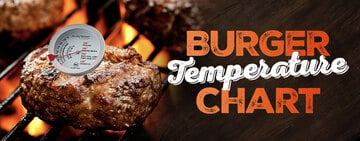
Burger Temperature Chart
Burgers are a staple of American cuisine, being one of the United State's most iconic and recognizable foods. One of the best features of burgers is they can be prepared in several different ways just like steak , allowing customers to order their meat exactly the way they like it. Cooking burgers correctly and following proper food safety guidelines is important, because if ground beef is incorrectly prepared it can lead to the spread of foodborne illnesses. Below, we cover how to prepare burgers properly, including how to cook burgers to each level of doneness. Shop All Meat Thermometers Use these links to learn more about the desired temperature ranges of each type of burger: Hamburger Internal Temperature Burger Temperatures Video Blue

Smoker vs Grill
Whether you run a steakhouse, restaurant, or sports bar, knowing the differences between smoking and grilling is essential. Though these forms of cooking are used interchangeably, there are significant differences between them. To optimize your menu and make informed decisions on what types of equipment to buy, it's important to understand what sets smoking and grilling apart. If you want to skip ahead to specific smoking and grilling topics, click below: Smoking vs Grilling Difference Between Smoking and Grilling What Is Barbequing? FAQ Smoking vs Grilling The difference between commercial smokers and commercial grills is how they cook. Though these appliances may look similar, they are designed for different purposes. To learn more about
- Topics 1366
- Industrial 55
- Troubleshooting Guides 21
- Restaurant Management 130
- Bar Management 58
- Catering Tips 37
- Bakery Management 42
- Food Trucks & Concessions 49
- Advertising & Marketing 37
- Eco-Friendly Tips 11
- Facility Layout & Design 42
- Coffee Shop Tips 29
- Installation & Maintenance 52
- Janitorial & Pest Control 30
- Safety & Sanitation 89
- Startup Tips 104
- Menu Design 10
- Kitchen & Cooking Tips 84
- Hospitality Management 24
- Pizza & Sandwich Shop Tips 36
- Smallwares 37
- Food Prep 90
- Tabletop Items 17
- Disposables 22
- Calculators & Tools 6
- Consumables 52
- Warewashing & Laundry 18
- Cooking Equipment 92
- Food Storage & Refrigeration 51
- Beverage Equipment 35
- Office Supplies 6


